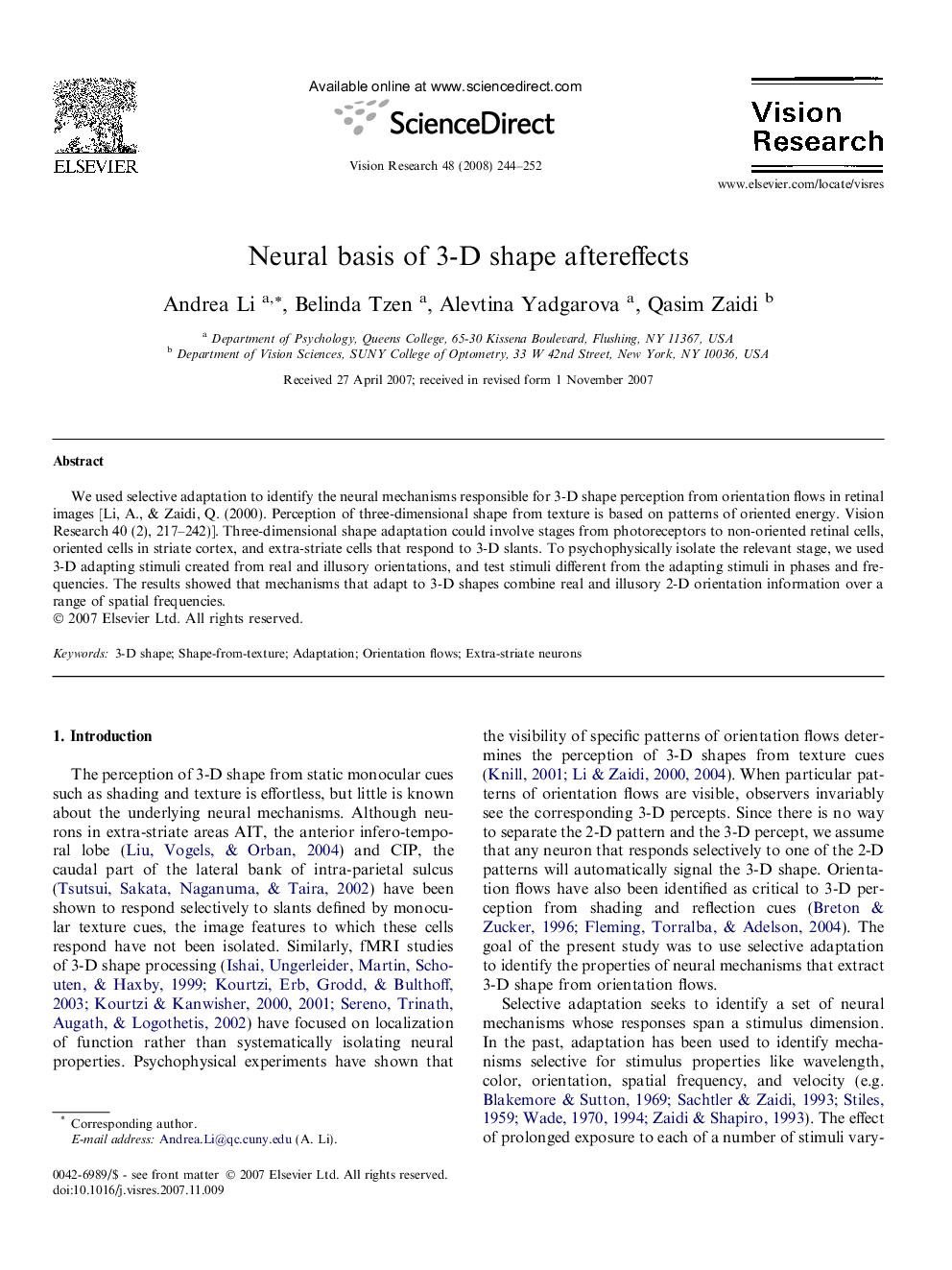| Article ID | Journal | Published Year | Pages | File Type |
|---|---|---|---|---|
| 4035226 | Vision Research | 2008 | 9 Pages |
We used selective adaptation to identify the neural mechanisms responsible for 3-D shape perception from orientation flows in retinal images [Li, A., & Zaidi, Q. (2000). Perception of three-dimensional shape from texture is based on patterns of oriented energy. Vision Research 40 (2), 217–242)]. Three-dimensional shape adaptation could involve stages from photoreceptors to non-oriented retinal cells, oriented cells in striate cortex, and extra-striate cells that respond to 3-D slants. To psychophysically isolate the relevant stage, we used 3-D adapting stimuli created from real and illusory orientations, and test stimuli different from the adapting stimuli in phases and frequencies. The results showed that mechanisms that adapt to 3-D shapes combine real and illusory 2-D orientation information over a range of spatial frequencies.
